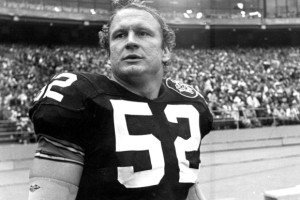Do you have a favorite team, which you have rooted for forever, but never wins?
Does it irritate, depress, or frustrate you that they lose, with no chance of winning?
Say No to all of this, with Fan Free Agency; in which fans (like the players & owners) can renegotiate their loyalties, whenever its convenient. Let me illustrate…
Growing up, I was a Cincinnati Reds fan. It was the mid-1970’s, and they were baseball’s best team. Joe Morgan (2B) was my favorite player, because he played smart and could do it all. When the Big Red Machine was traded away/ broke down, I hung with them through the losing of the 1980’s. After being denied the playoffs in 1981, despite having the best record in baseball, the Reds once proud farm system now produced more suspects than prospects– in the forms of Ron Oester, Gary Redus, and Nick Esasky. Player/ manager Pete Rose’s betting scandal rocked the organization by decade’s end, and Marge Schott’s racism & ignorant ownership meddling always lurked in the background. Patience was finally rewarded in 1990, when the Reds went wire-to-wire and won the World Series, sweeping the mighty Oakland A’s.
Diehards stayed with them when they were quickly surpassed by the Atlanta Braves in the 1990’s. Center-fielder Eric Davis & SS Barry Larkin were my favorite players. I really didn’t care for other Reds ‘star’ players including Reggie Sanders, Ron Gant, and Hal Morris; whom I noticed were almost always neutralized by good pitching. But hey–you still stick with your team, right? So I did, even when I knew they couldn’t compete with the best.
When the Reds went all-in on Ken Griffey Jr. in 2000, fans were excited. A few years later, the reality of Griffey’s superstar contract on the DL had left hardcore supporters waiting on the next crop of prospects including: Joey Votto, Jay Bruce, and Johnny Cueto. The bandbox ballpark they had just built, to accommodate Griffey Jr. in his pursuit of Aaron’s career HR record, hurt their development of starting pitchers and outfield defense.
Despite all that, things started looking up for the Reds when they acquired perennial Devil Rays prospect Josh Hamilton from the Cubs in 2007, who hit .292/.368/.554 in 90 games in CF for Cincinnati. Reds management didn’t recognize what they had, and dealt Hamilton to Texas in the off-season for Edinson Volquez; where Josh became a 5-time All-Star, AL MVP, and helped the Rangers win two pennants.
To complete the 2007-08 off-season double-disaster, the Reds also brought in Dusty Baker to be their manager. Dusty Baker’s low-OBP, small-ball, “aggressive” style has long been been a losing strategy in MLB– even since his playing days in the 1970’s.
Dusty is also notorious as a wrecker of pitchers (see Mark Prior, Kerry Wood, Jason Schmidt, Russ Ortiz), managing the SF Giants from 1993-2002, all with superstar Barry Bonds; winning his only pennant in 2002. The Giants were set to win it all, until the 7th inning of Game 6, when the Giants suffered one of the worst meltdowns in World Series history. [collapse starts at 2:15 in the video]
* Barry Bonds was the real MVP of the 2002 World Series
After losing the heart-breaker shown above, and then Game 7 the following night; the Giants didn’t renew Baker’s contract. Cubs GM Jim Hendry signed Baker to manage the Northsiders. Dusty’s reign ended ignominiously when star RF Sammy Sosa & Baker both mishandled game situations & criticism, wearing out their welcome in Chicago. Wrigley Field normally has the most optimistic, soft-hearted & forgiving fans in baseball; but a majority of Cubs fans had little affection for Baker’s brusque style by the end of his tenure in 2006.
Baker’s problems have always included: not trusting younger players; overemphasis on small-ball tactics; bullpen management; and of course– abusing his starting pitchers. He, like many old-school ballplayers, refuses to understand the value of sabermetrics, statistical analysis, medical science, etc; and is therefore ill-equipped to manage a MLB team in this era.
The video above, from the infamous ‘Steve Bartman’ game, is vintage Dusty Baker; staying with his young stud starter too long (119 pitches), while his team falls apart fundamentally. He ceaseless fidgets his toothpick throughout. Mark Prior was never the same after this outing, as his promising career was cut short by rotator cuff injuries.
Bad decisions don’t win, and the Dusty Baker-managed Cincinnati Reds of 2008-13 confirmed that theory; as he never won much in Cincinnati, even though he had talented players with an owner willing to spend.
Still a lifelong Reds fan through 2007, it no longer made sense to let myself be held hostage to the short-sightedness of professional nitwits. I simply did what any reasonable, non-masochistic baseball fan would do– pick a new favorite team.
Enter the Tampa Bay Devil Rays, who were the joke of MLB from their inception in 1998, until Stuart Sternberg acquired controlling interest of the team from Vince Naimoli in 2005. From there the TB Devil Rays invested in sabermetric scouting & evaluation, with much-improved player development; quickly putting together an enviable farm system, even as they were still perennially finishing last.
They changed the franchise name to the Tampa Bay Rays for the 2008 season, just as their prospects were maturing; and to the complete surprise of most, won the AL pennant in 2008. It looked like the beginning of many trips to the fall classic, with a roster full of young talent and another top draft pick to come.
Under GM Andrew Friedman and savvy manager Joe Maddon, the Rays competed with the high-payroll Yankees & Red Sox for six seasons on sheer hard work, brains and a shoestring budget; until it finally snapped on July 31, 2014 when the Rays dealt LHP David Price (the best pitcher they’ll ever have, with another year of arbitration remaining), to the Detroit Tigers for prospects.
In the 2014-15 off-season; RF Wil Myers, 2B Ben Zobrist, and OF Matt Joyce (all championship-level players with team-friendly contracts) were jettisoned for no good reason. A return to the World Series for the Rays was never-to-be, as poor drafts & stunted player development ended the talent pipeline. Ownership’s refusal to invest in talent eventually whittled the short-stacked Rays into the AL East fodder they are today.
Now, everything with the Rays centers on getting the taxpayers to build them a new stadium. Tropicana Field was designed by original owner Vince Naimoli. It is a charmless domed stadium located at the end of a peninsula, making it poorly accessible to most of the Tampa-St. Petersburg population. It rightfully stands as a monument of Floridian thoughtlessness & greed, with the TB Rays locked into a 30-year lease through 2027. Rays fans are annually bombarded with veiled threats from ownership to move, if the taxpayers don’t pitch in. [1]
Stuart Sternberg in a 2011Tampa Tribune interview said, “Every year that goes by increases the possibility that we won’t be here. If there is something inevitable, you have to deal with it. At some point, my partners in baseball are going to throw their hands up in the air and say, ‘enough is enough.’” [2]
A baseball fan’s advice to Stu Sternberg who is worth an estimated $800 million [3]: try keeping your best players, and fill in on-the-field needs with (at least) mid-level contracts. If you always punt on C, 1B, DH, and LF; then you don’t score enough runs for your awesome pitching staff. That’s how you piss away chance after chance to win it all, with 70-80% of the talent already there.
The Rays revolutionized team defense, proving Defensive Efficiency Rating (the percentage of batted balls in play, minus home runs, converted into outs) and other defensive sabermetrics to be superior in comparison to traditional defense metrics (errors, assists, put-outs, etc). Advanced metrics show the Rays defense at their peak (CF BJ Upton/ LF Carl Crawford era) was historically great.
Rays ownership & front office consistently played for tomorrow with arbitration eligibility, holding back its best prospects (even when they were desperately needed [see Desmond Jennings, Wil Myers]), in order to extend their peak seasons before free agency. Many players rightfully resented those tactics (see Upton & Crawford for sure), and considering the talent the Rays organization had, it seems a shame the front office never was allowed to value winning ahead of cost savings & revenue projections.
The Rays consistently had one of the lowest payrolls in MLB ($40-70 million), while competing in the AL East against the NY Yankees & BOS Red Sox, both in the $140-220 million range. Their pitching staff, along with their defense, was the best in baseball. Nobody put together & managed a bullpen better than Joe Maddon. What the Rays needed was another $15-20 million, well-spent on bats; but ownership would never approve it. That will be the sad, but enduring legacy of the 2008-14 Tampa Bay Rays.
For me, the Rays and their remaining hardcore fans will suffer on their own– with the assurance that winning is but a distant memory. Outside of 3B Evan Longoria (signed to a ridiculously low long-term deal), most of their winning talent is now somewhere else– or on the DL. Their championship window was carelessly squandered, by an ownership that refused to care for its product on the field, because it really only cares about getting itself a new field.
The point of all this is: why support teams that run themselves poorly? Why should fans be loyal to teams that don’t invest in themselves? One solution is to become a free agent fan, and choose an organization that runs itself well; that proves it wants to win by building from within, while spending (& dealing) wisely. Those are qualities a baseball fan can admire and get behind.
This free agent fan chooses the San Diego Padres as his favorite MLB team in 2015. I’ve never seen much of the Padres, but I like the moves they’ve made in the off-season. They play in a pitcher’s park (cool), and newly-acquired RHP James Shields was my favorite player with TB. He joins Wil Myers (the guy he was dealt to KC for), so I’m in on the Padres. BJ Upton is also in the mix, so no West-coast bias here. Matt Kemp is a great player, and his health is key.
The Lowdown: the Padres are trying to compete against the defending world champion SF Giants (who haven’t repeated in their run), and the sky high-payroll LA Dodgers in the NL West. Rockies & Diamondbacks are considered to be second division clubs, until proven otherwise. Padres have upped their payroll to $108 million in order to take a shot.
The new format of two wild-cards helps their chances. As always in baseball, you never know how it will turn out, but at least 2015 Padres fans can feel like their team has committed itself to winning.
Think in terms of winning value & money spent, and see you in October. Good judgement in those areas are all a baseball fan can expect from management & ownership under capitalism.
Play Balls & Strikes!
************************************************************************************************


































